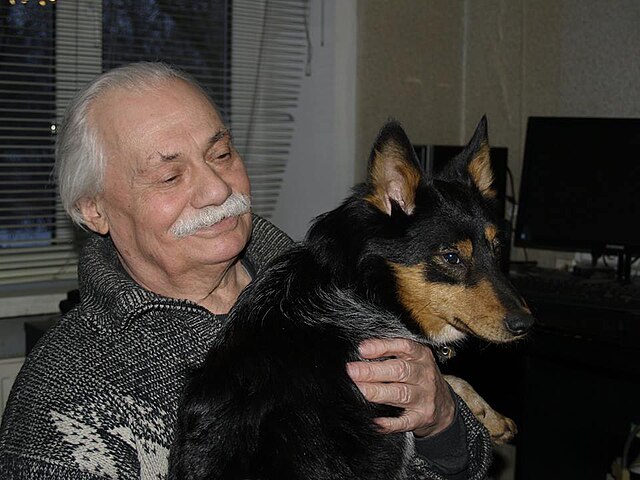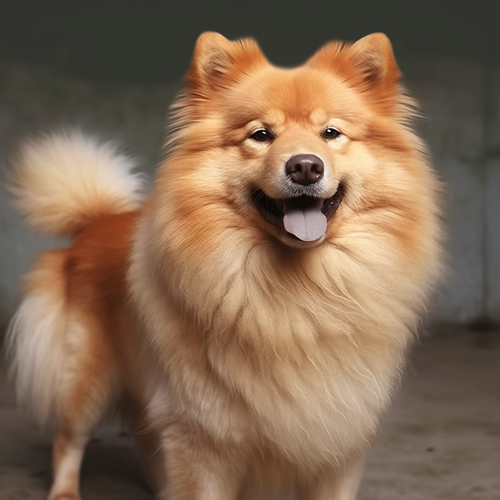The Alaskan Malamute is a powerful spitz breed, once utilized to pull heavy cargo across snowy terrain. Although many Malamutes would work together as a team, the handlers and owners were always very aware of which dogs to keep together and which dogs to keep apart. Unaltered males, in particular, tend to not get along well with each other. Spitz breeds in particular tend to have an “extra sense” of pack hierarchy. This is because they are older, more primitive breeds. Don’t let the word primitive fool you however, as this does not mean that they are unintelligent in any way. On the contrary, they tend to be self-confident, willful, and very smart…. they tend to “train” their owners instead of the other way around! Because this is such a powerful breed with an independent mind, care must be taken so that they do not try to dominate you or other members of your family. This is NOT the breed for a first-time dog owner!
This is not to say that these dogs are not affectionate and friendly, because they definitely are. They are not guard dogs and they aren’t normally aggressive. There is a big difference between dominance and outright aggression, and someone who is interested in the breed would do well to learn the difference and raise them right so that they know their rightful place in the pack (your family). This does not mean you need to use harsh methods or “tear them down”, but simply to establish firm rules and boundaries. A Malamute, like any dog, who knows their place in the pack is a happy and well adjusted member of the family. Obedience training is recommended at a young age for this breed, before they begin to get too big to handle! Also realize that many adolescents go through a “testing phase”, almost like teenage rebellion. It is important to work through this stage with firmness and fairness. This stage doesn’t last forever, but must be handled in the right way in order to maintain a stable dog.
Malamutes have a few other traits that may be undesirable to some. Many, when bored, will howl like wolves for hours, chew up your furniture, or dig huge craters in your yard. This means that they are not being given either enough exercise or mental stimulation. These dogs definitely need a lot of exercise! A short walk around the block will not suffice, they need long jogs once or twice daily in order to fulfill their needs. (The regular offering of a treat such as a Benebone will also help exercise their jaws – https://amzn.to/410F5TG ) Not only that, but they were designed to do jobs and they still need to do jobs today. Some of the jobs in which they excel include backpacking, sledding, carting, and weight pull although obedience is always also recommended. Many owners have fun with their dogs in conformation shows, agility, rally, canine freestyle, therapy work, and flyball! There are so many fun dog sports that you can be successful with your Malamute!
They are also not great dogs to keep off-leash unless very well trained (and even when well trained, you are always still taking a gamble). Many have a high prey drive and tend to take off after cats and wildlife. Once they start running, they will keep on running because they were bred to run in one direction for hundreds of miles! Because they have no car sense, many get hit by cars. Not only are leashes highly recommended, but sturdy fences as well. Unlike many other breeds, many Malamutes can do well as mostly-outdoor dogs although they still require the exercise and mental stimulation as mentioned above. Even if they live mostly outdoors, they still require affection and care. Many do best while living both indoors and outdoors, with a dog door so that they can choose whether to be in or out.
Let me reiterate that they have a high prey drive! While some live harmoniously inside the house with cats, these are usually individuals raised with that cat as a young puppy, and even that does not guarantee the cat’s safety. That same cat… who he has lived with for years… may or may not be considered food if the cat is outside. Many cannot be trusted with small animals at all, and some cannot be trusted with tiny dogs either. Socialization always helps but a Malamute owner must be careful at all times with smaller animals. The reason for this is that the breed had to be very resourceful while living in the Arctic, and the chase-kill instinct had to be strong in order for them to find meals.
Their coats can require a lot of care when they are shedding, which normally happens twice a year. Be prepared to brush and brush and brush… and don’t be surprised if you have tumbleweeds of dog hair floating throughout your house. Those that love the breed think nothing of this, and brushing can be a great bonding experience with your dog!

Affiliate Disclaimer
As an Amazon Associate, I earn from qualifying purchases. This means that if you click on an affiliate link on this site and make a purchase, I may earn a small commission at no additional cost to you. Rest assured that I only link to products I have used, or use on a regular basis, and trust enough to recommend them to you!



